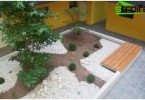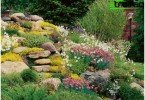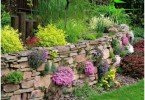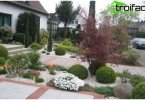Russian regular gardens and parks
In urban squares, and now you can see parks, very similar to those that were created in ancient Greece and in ancient Rome. What is a regular garden, what are its features, and why architects of hoary antiquity with mathematical precision observed all the proportions when breaking down the garden?
Content
- Key features of a regular style
- The very first regular park
- Symmetry and asymmetry
- History of the creation of parks
- The illusion of large spaces
- Some terms
- Regular style tricks
Key features of a regular style
- Axial symmetry, regular shapes and straight lines are clearly visible in such a landscape composition.
- Boxwood, yew, holly – evergreens that make the park attractive throughout the year.
- For flower beds, annuals are selected, the flowering period of which is long. It is important that the lighting is uniform, otherwise there will be an asymmetry of growth and flowering.
- A pool or a fountain is an indispensable attribute of a regular style. Its geometric shape can be different, but required symmetrical. Around the reservoir planted vegetation.
- Arches, pergolas and green hedges are used for zoning the space. Topiary figures are also appropriate in such a park..
- Since these gardens were originally created in the area around the castles and took up a lot of space, in a small summer cottage a regular park will not look too good.
- Luxury does not happen much. Marble, bronze, ceramics are used to create decorating elements. The Royal Garden is not a place to save.
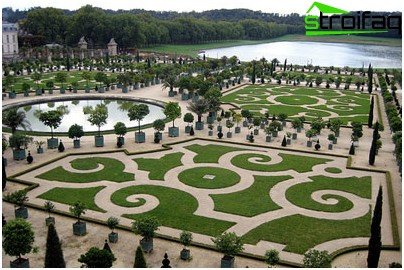
The main idea of the park: the desire to place all the elements in such a way that the lines and planes seemed elegant and graceful
The very first regular park
The oldest known parks were created in Egypt, they were also built according to the principle of a regular garden. The ancient Greeks reasoned very logically and rationally. Strict forms and exact calculation can be traced not only in their architecture, but also in landscape gardening art. Order in everything – no contradictions and dynamics, only calm, classic forms.
There is an opinion that politics, history and philosophy influence their architecture. Classical architecture is perfect – nothing can be added to it, there is nothing superfluous in it. Classic is the ideal.
Such a system was beneficial for politicians, because it maintained stability. Classics became the official style of architecture of the empire of Catherine II and the monarchy of Louis XIV. Cold superiority and detachment from real problems – these are what strict forms, exact calculation and absolute symmetry actually expressed.
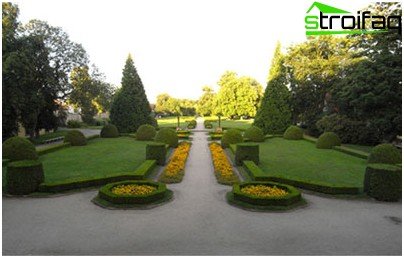
Walking in such a garden can drag on for a long time, at every turn new views
Symmetry and asymmetry
Proportionality, symmetry – this is the harmony between the individual parts of the whole structure. The ancient Greeks had no doubt about the subject, in which there was no symmetry – it was considered not perfect and ugly. The very concept of symmetry is broader; it is applied not only to figures, but also to phenomena and processes..
Asymmetry – disorder as a result of movement. We can say that symmetry is a state of rest, asymmetry is a state of motion. A moving system cannot be symmetrical. It follows from this that absolute symmetry is characteristic only of objects of inanimate nature.
There was a whole “code of aesthetics of symmetrical installations”.
- The right form enhances the experience..
- Each detail is displayed in the most favorable light, it occupies the space allotted to it, however, it is not allocated so much that the other elements are “lost” against its background.

Snowflake – an example of symmetry in nature
History of the creation of parks
In the Baroque era in France, parks were created at the palace of King Louis XIV, the design of which corresponded to the regular style. This is where the name “French regular garden” came from, although fashion for such parks in Italy was born. English gardeners have introduced their innovations. They began to practice cutting shrubs and trees of complex shape. Bushes in the form of birds, animals and geometric figures now adorn parks around the world..
The park in Versailles is a typical example that characterizes the regular style in landscape design. Solemn, pompous, majestic – just such a park was to serve as a place for walks of kings and their nobles. Andre Lenotre – Louis XIV gardener who worked on creating parks in a regular style.
Parks were built not for the purpose of unity with nature, but rather, with the goal of subjugating it to themselves. The entire ensemble of Versailles (a park with a palace) is subordinated to the idea of autocracy. Alleys that diverge in rays from the center symbolized the absolute power of the king. Russian regular gardens and parks arose thanks to Peter I, who saw a sample of landscape art in Versailles in 1717.
Gardens in Florence and Fiesole are also examples of landscape gardening art. Their features:
- symmetric seed beds;
- fountains with cascades;
- labyrinths, grottoes, sculptures of mythological creatures.
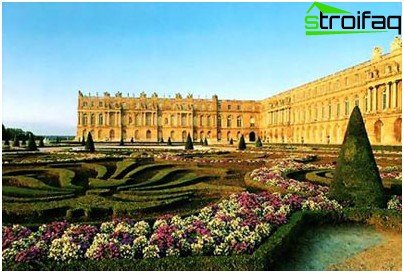
Garden of Versailles. French monarchs strolling here
The illusion of large spaces
The terrace, which was built over the garden, served as a convenient place for viewing. Flowerbeds, lawns, bushes planted with curbs or colored sand. All trees had the same height, the bushes were also cut. In the middle of the garden, as a rule, there was a residential building, while there were no trees next to it, only low shrubs. A pond was built along the main axis of the composition or a lawn framed by trees was broken. The main axis of the park was located opposite the main entrance, while it was always perpendicular to the facade of the house.
- A garden in a regular style was created like a building. So green lawns were called rooms, rows of bushes – walls, cascading fountains – stairs. Performances and fireworks, ballets and comedies were often held here. In the 18th century, fashion came to landscape gardens, and the role of architecture here ceased to be the main.
- Elegant lace parterres in the shape of a square, circle, oval were created directly at the house.
- The trees were sheared so that the trees farther from the center of the garden seemed lower. Thanks to this perspective, the gardens seemed bigger than they really were..
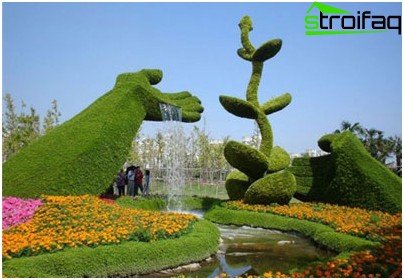
Topiary figures first created in England
Some terms
- Parterre is a part of a garden with lawns, ponds, flower beds. All elements of the composition are one. Parterres are decorated with colorful sand. They have a particularly spectacular view from the height of the building’s windows..
- Bosquet is a group of trees that serves as a backdrop..
- Topiary – a decoratively trimmed bush.
- Arabesque is a complex ornament made on the ground of short-cut bushes.
- Aha moat – a way to mask building envelopes.
- “Goose paw” – a picture of 3 or 5 alleys, coming from one point.
Regular style tricks
Landscape architecture uses living building materials, namely: plants, water, soil, stones.


